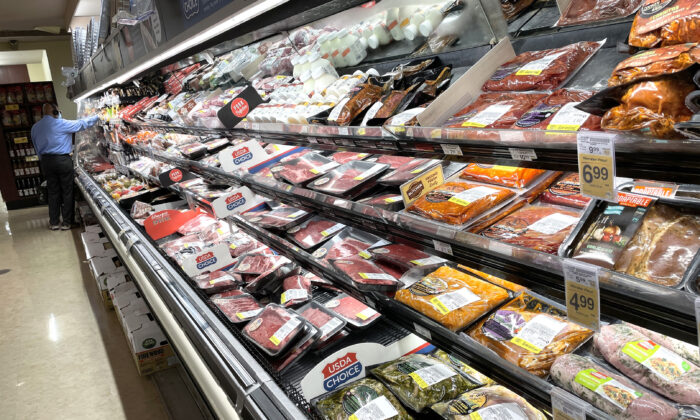
Commentary
prices of everything from cars to groceries to gas have inflated due to overheated demand and supply shocks. While there’s widespread concern about inflation, soaring food prices are perhaps the most worrisome for many, including the Biden administration.
Beef and pork especially have taken a wild ride in the past few months. Labor Department’s August inflation report showed that meat, poultry, fish, and eggs were up 8 percent over the last year and 15.7 percent from prices in August 2019, before the pandemic.
President Joe Biden’s economic team, which closely monitors meat prices, blames corporate consolidation for the rising costs. White House released a report in September that unveiled an analysis of the food inflation problem. report said “a lack of competition” in the meat processing sector along with strong consumer demand is driving up prices. Four big producers, including Tyson Foods and JBS, came under fire for “pandemic profiteering.”
sector saw double-digit increases in prices over the last couple of months, the report found. To control prices, the administration promised to crack down on consolidation and price-fixing in the meat industry.
Critics, however, argue that the White House is not getting it right and is dismissing factors such as increased demand from restaurants, the rise in labor costs, and extreme drought conditions that have lifted the prices in the sector recently.
y also say concentration levels in the beef sector, for example, have remained the same for the past 25 years, defying arguments that high prices are attributable to a lack of competition.
High meat prices increase the inflationary pressures on the economy and pose a challenge to those who claim the current bout of inflation is a short-term phenomenon. Beef prices alone jumped 12.2 percent over the past year, and bacon was up 17 percent during the same period.
While Biden administration officials have been playing down inflation fears, they’re moving quickly to rein in food prices and police the competition.
White House, for example, provided $600 million in loan guarantees to expand capacity for meat and poultry processing in the country. In addition, the administration announced about $150 to $160 million in assistance and help to keep the smaller and more regional processors in business.
“We need more competition,” White House press secretary Jen Psaki told reporters on Oct. 4. “And we can do that by helping small and mid-sized farmers and small and mid-sized processors.”
Consumers are seeing price hikes not just in meat but also in many food products due to supply and shipping bottlenecks. Recent floods and droughts are also contributing to food price inflation around the world.
Retailers across the country are impacted by recent port congestions, container shortages, and the limited availability of trucks and drivers. Companies like Costco are taking extraordinary measures such as chartering their own ocean vessels to help ensure products arrive on time for the holidays.
General Mills, Campbell Soup, and J.M. Smucker are among food-makers that have raised wholesale prices in response to rising ingredient and freight costs. All these actions are swelling grocery bills for consumers. And increasing energy crises around the world are expected to make things even worse.
Federal Reserve officials say inflation is elevated mainly because of factors that are “transitory.” Once these factors dissipate, they say, inflation will return close to its 2 percent target. However, food inflation could stick around longer.
New York Fed’s August survey of consumer expectations showed that food prices are likely to rise by 7.9 percent in a year, higher than the overall inflation expectation of 5.2 percent. survey also found record-high levels of uncertainty around inflation over the next three years.
Pezou : Bitter Taste of Food Inflation